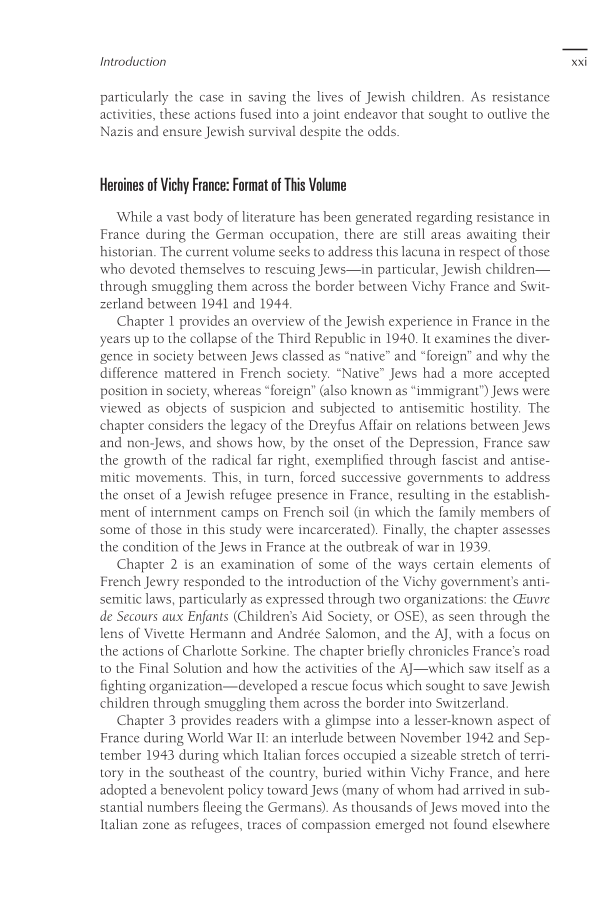Introduction xxi particularly the case in saving the lives of Jewish children. As resistance activities, these actions fused into a joint endeavor that sought to outlive the Nazis and ensure Jewish survival despite the odds. Heroines of Vichy France: Format of This Volume While a vast body of literature has been generated regarding resistance in France during the German occupation, there are still areas awaiting their historian. The current volume seeks to address this lacuna in respect of those who devoted themselves to rescuing Jews—in particular, Jewish children— through smuggling them across the border between Vichy France and Swit- zerland between 1941 and 1944. Chapter 1 provides an overview of the Jewish experience in France in the years up to the collapse of the Third Republic in 1940. It examines the diver- gence in society between Jews classed as “native” and “foreign” and why the difference mattered in French society. “Native” Jews had a more accepted position in society, whereas “foreign” (also known as “immigrant”) Jews were viewed as objects of suspicion and subjected to antisemitic hostility. The chapter considers the legacy of the Dreyfus Affair on relations between Jews and non-Jews, and shows how, by the onset of the Depression, France saw the growth of the radical far right, exemplified through fascist and antise- mitic movements. This, in turn, forced successive governments to address the onset of a Jewish refugee presence in France, resulting in the establish- ment of internment camps on French soil (in which the family members of some of those in this study were incarcerated). Finally, the chapter assesses the condition of the Jews in France at the outbreak of war in 1939. Chapter 2 is an examination of some of the ways certain elements of French Jewry responded to the introduction of the Vichy government’s anti- semitic laws, particularly as expressed through two organizations: the Œuvre de Secours aux Enfants (Children’s Aid Society, or OSE), as seen through the lens of Vivette Hermann and Andrée Salomon, and the AJ, with a focus on the actions of Charlotte Sorkine. The chapter briefly chronicles France’s road to the Final Solution and how the activities of the AJ—which saw itself as a fighting organization—developed a rescue focus which sought to save Jewish children through smuggling them across the border into Switzerland. Chapter 3 provides readers with a glimpse into a lesser-known aspect of France during World War II: an interlude between November 1942 and Sep- tember 1943 during which Italian forces occupied a sizeable stretch of terri- tory in the southeast of the country, buried within Vichy France, and here adopted a benevolent policy toward Jews (many of whom had arrived in sub- stantial numbers fleeing the Germans). As thousands of Jews moved into the Italian zone as refugees, traces of compassion emerged not found elsewhere
Document Details My Account Print multiple pages
Print
You have printed 0 times in the last 24 hours.
Your print count will reset on at .
You may print 0 more time(s) before then.
You may print a maximum of 0 pages at a time.









































































































































































































